Materials
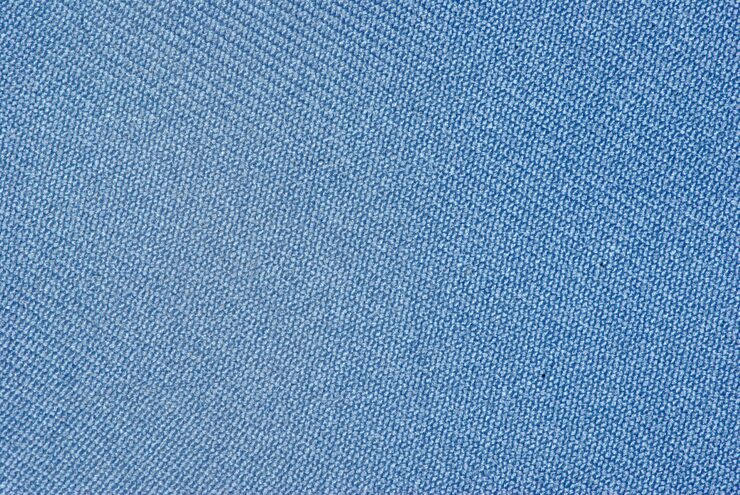
DENIM
Denim is a timeless fabric known for its durability and unique character that grows with wear. While traditionally made from cotton, a resource-intensive crop, denim’s sustainability depends greatly on how it’s sourced and treated.
At kyu, we proudly support a local Lebanese shop specializing in quality denim, helping us keep the craft close to home while reducing environmental impact.
We also invite you to be part of our sustainability journey: if you have old denim pieces like jeans, jackets, skirts, or trousers you no longer wear, we’d love to give them new life by transforming them into unique, handcrafted bags.
If you’d like to donate your denim or learn more, please reach out to us at hello@brandkyu.com or send us a message on WhatsApp.
Together, we can turn pre-loved denim into something extraordinary, carrying stories and style in every thread.
LOCALLY RECLAIMED LEATHER
At kyu, we believe sustainability extends beyond materials, it’s about people, processes, and purpose. That’s why we collaborated with one of Lebanon’s oldest tanneries, known for its traditional and responsible tanning methods. The hides are sourced from animals already part of the local food chain, ensuring whole-animal utilization and minimizing waste. This approach stands in contrast to mass-produced leathers, where the origin is often unknown and the environmental and ethical impact is far greater.
Here, we know the animals are treated with care, and we know the people behind the process. By supporting this tannery, we contribute to social sustainability, preserving local craftsmanship and ethical sourcing practices. The tanning is done in carefully controlled, smaller-scale operations, which are potentially less chemical-intensive and more mindful than industrial tanning.
We’ve introduced this locally reclaimed leather in one of our existing designs, a special edition that embodies our commitment to sustainability and craftsmanship.
If you’re interested in owning a piece made with this unique material or would like to explore creating another design in reclaimed leather, feel free to email us at hello@brandkyu.com or message us on WhatsApp. We’re happy to work with you to find the perfect style and color to bring your vision to life.
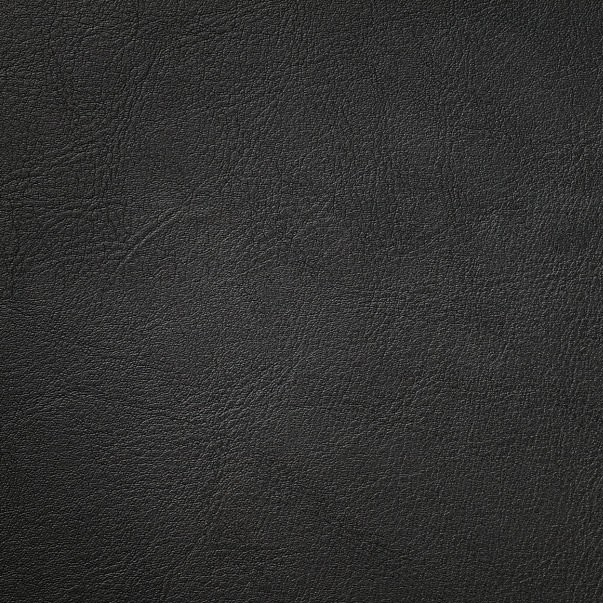

LOCALLY RECLAIMED LEATHER
At kyu, we believe sustainability extends beyond materials, it’s about people, processes, and purpose. That’s why we collaborated with one of Lebanon’s oldest tanneries, known for its traditional and responsible tanning methods. The hides are sourced from animals already part of the local food chain, ensuring whole-animal utilization and minimizing waste. This approach stands in contrast to mass-produced leathers, where the origin is often unknown and the environmental and ethical impact is far greater.
Here, we know the animals are treated with care, and we know the people behind the process. By supporting this tannery, we contribute to social sustainability, preserving local craftsmanship and ethical sourcing practices. The tanning is done in carefully controlled, smaller-scale operations, which are potentially less chemical-intensive and more mindful than industrial tanning.
We’ve introduced this locally reclaimed leather in one of our existing designs, a special edition that embodies our commitment to sustainability and craftsmanship.
If you’re interested in owning a piece made with this unique material or would like to explore creating another design in reclaimed leather, feel free to email us at hello@brandkyu.com or message us on WhatsApp. We’re happy to work with you to find the perfect style and color to bring your vision to life.
ū
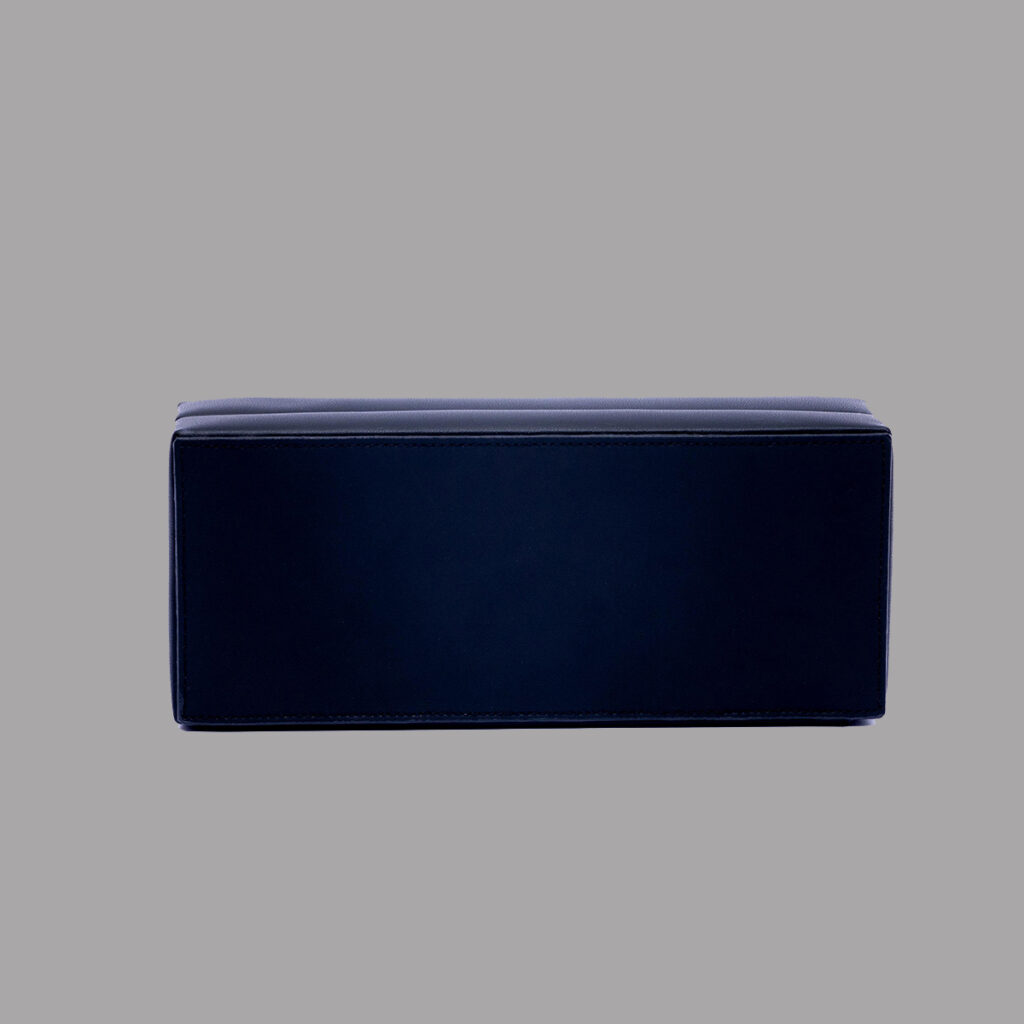
PREMIUM UPCYCLED VEGAN LEATHER
For our first edition, we’ve chosen premium upcycled PU leather as the main material for our handbags. This decision reflects our commitment to sustainability, animal welfare, and social responsibility, all while supporting local resources in Lebanon.
At kyu, we believe that luxury can be created from what already exists. By using upcycled PU leather, a material that’s often overlooked, we are demonstrating how ordinary, available resources can be transformed into something exceptional and beautiful. We see it as a way to prove that with creativity and dedication, any material can be elevated into something luxurious.
PU leather is the only available alternative to genuine leather in our region, making it the perfect choice for us to continue our mission of supporting local artisans and sustainability. Not only does it reduce the demand for animal products, but its production process generates less waste and has a smaller environmental footprint compared to traditional leather.
We understand that some may have concerns about the quality of PU leather, but we want to assure you that we use only the highest quality materials, ensuring our handbags are durable, long-lasting, and able to withstand daily use while maintaining their luxurious appeal.
We’re committed to continuously improving and innovating. As part of our journey, we are excited to explore even more sustainable options, like bio-leather, made from renewable and biodegradable resources. Our goal is to always push the boundaries of what’s possible, creating luxury while reducing our impact on the planet.
METAL
Metal is a beneficial choice for the environment due to its durability, recyclability, and low environmental impact. Firstly, metal is highly durable, which means products made from metal have a longer lifespan and reduce the need for frequent replacements. This longevity helps conserve resources and minimizes waste generation. Secondly, metal is a recyclable material that can be repurposed and reused without losing its properties. This promotes a circular economy and reduces the demand for extracting new raw materials.
At kyu, we specifically chose to use metal chains in our bags for their strength, reliability, and timeless appeal. These metal chains provide sturdy support and longevity to our bags, ensuring they can withstand daily use and last for years. Additionally, we selected brass for our tags and accessories, due to its unique properties. Brass is an alloy made primarily of copper and zinc and is known for its durability, corrosion resistance, and recyclability. By utilizing brass, we contribute to sustainable practices by choosing a material that can be reused or repurposed.
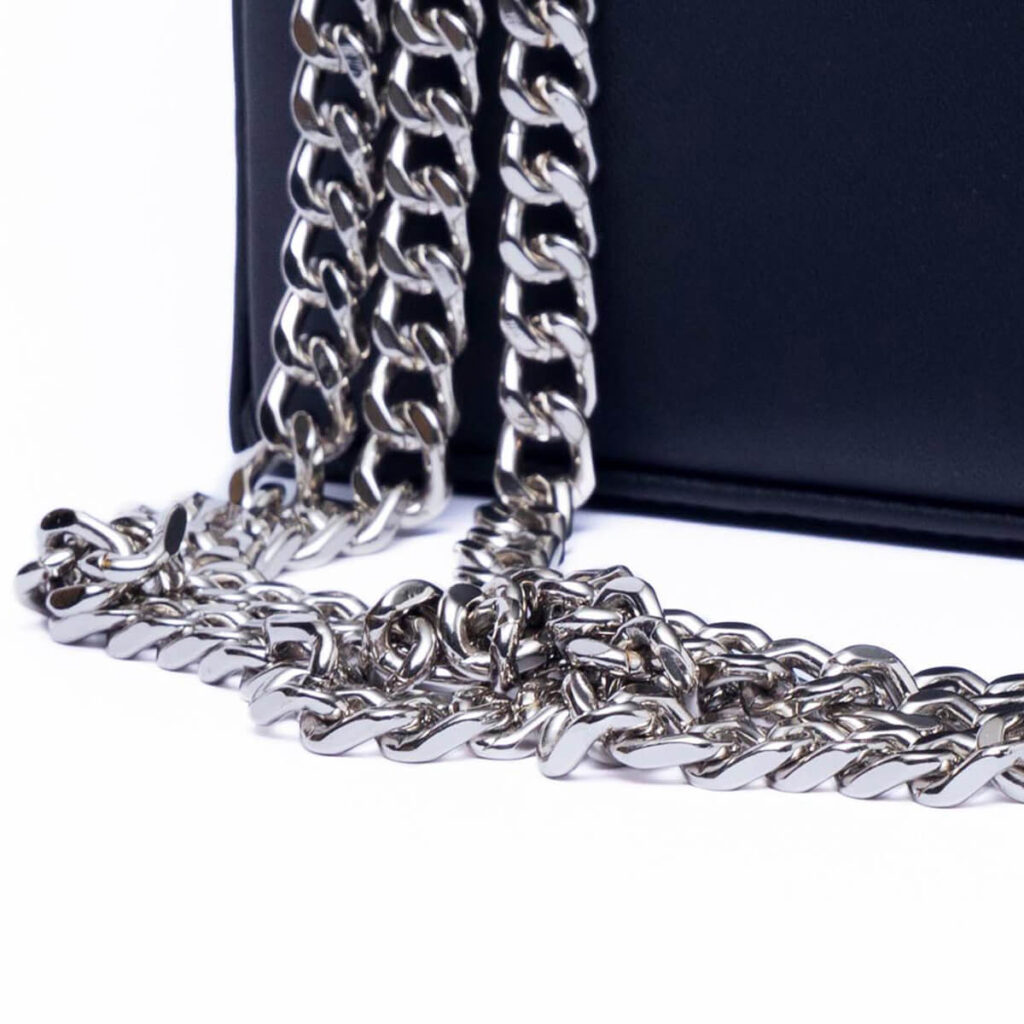

METAL
Metal is a beneficial choice for the environment due to its durability, recyclability, and low environmental impact. Firstly, metal is highly durable, which means products made from metal have a longer lifespan and reduce the need for frequent replacements. This longevity helps conserve resources and minimizes waste generation. Secondly, metal is a recyclable material that can be repurposed and reused without losing its properties. This promotes a circular economy and reduces the demand for extracting new raw materials.
At kyū, we specifically chose to use metal chains in our bags for their strength, reliability, and timeless appeal. These metal chains provide sturdy support and longevity to our bags, ensuring they can withstand daily use and last for years. Additionally, we selected brass for our tags and accessories, due to its unique properties. Brass is an alloy made primarily of copper and zinc and is known for its durability, corrosion resistance, and recyclability. By utilizing brass, we contribute to sustainable practices by choosing a material that can be reused or repurposed.
ū
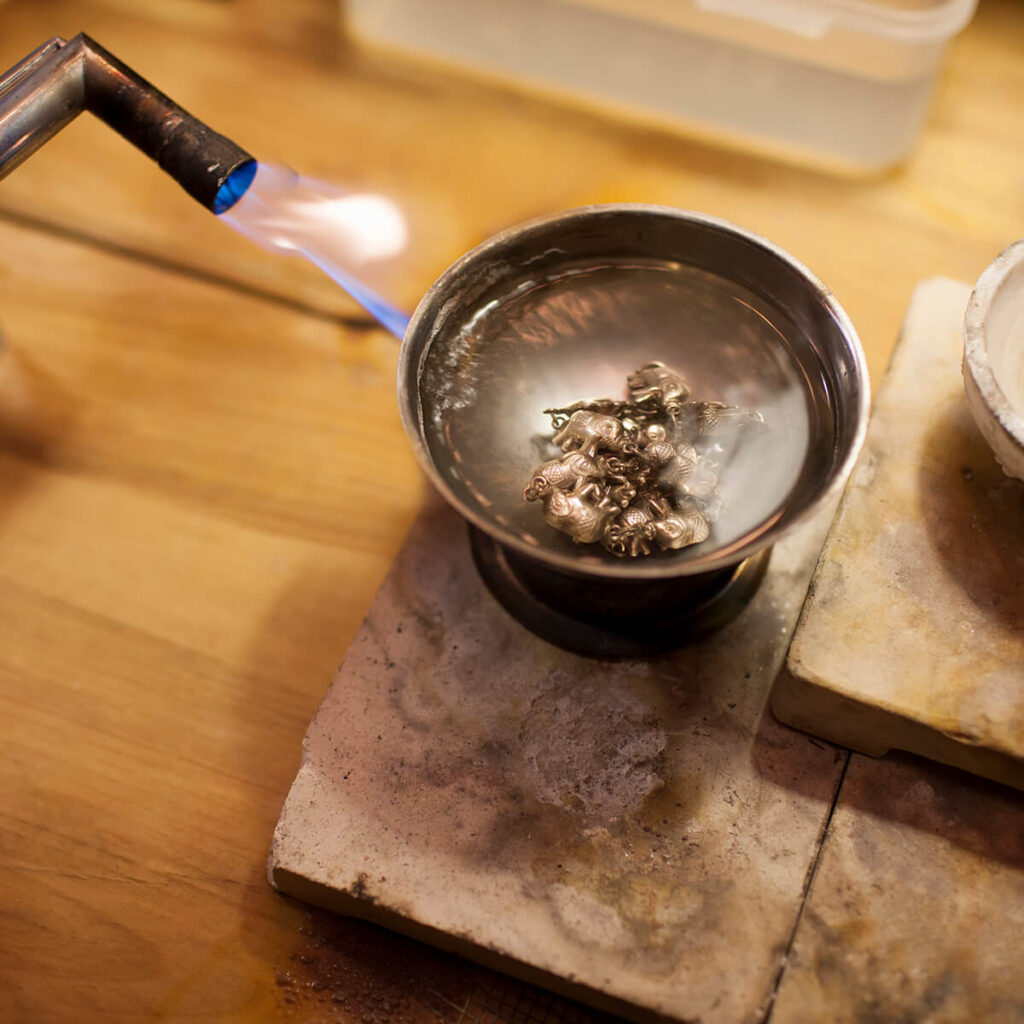
RECYCLED SILVER
Using recycled silver for our earrings offers significant environmental benefits. Firstly, it reduces the need for new silver mining, which can lead to habitat destruction, water pollution, and carbon emissions. By repurposing existing silver, the energy and resources required for mining, refining, and processing are minimized, resulting in a lower carbon footprint. Additionally, recycling silver decreases the demand for landfill space and lessens the overall pressure on natural ecosystems. When used in jewelry, recycled silver promotes sustainable practices in the fashion industry, showcasing a commitment to responsible sourcing and production while maintaining the same quality and beauty as newly mined silver.

RECYCLED SILVER
Using recycled silver for our earrings offers significant environmental benefits. Firstly, it reduces the need for new silver mining, which can lead to habitat destruction, water pollution, and carbon emissions. By repurposing existing silver, the energy and resources required for mining, refining, and processing are minimized, resulting in a lower carbon footprint. Additionally, recycling silver decreases the demand for landfill space and lessens the overall pressure on natural ecosystems. When used in jewelry, recycled silver promotes sustainable practices in the fashion industry, showcasing a commitment to responsible sourcing and production while maintaining the same quality and beauty as newly mined silver.
POLYESTER TAFFETA
We have chosen to use purple recycled taffeta polyester for our bag liners to make a positive impact on the environment. By utilizing recycled materials, we contribute to waste reduction and resource conservation. However, it’s important to note that the availability of recycled taffeta polyester can sometimes vary. As we prioritize using recycled materials for sustainability reasons, there may be instances where the material or color of our bag liners differs slightly. This is a result of the limited supply of recycled taffeta polyester. Nonetheless, these variations highlight the uniqueness of each product and demonstrate our commitment to sustainable practices. We believe that the environmental benefits of using recycled materials outweigh any minor differences in appearance, and we remain dedicated to our goal of creating a positive impact through conscious material choices.


POLYESTER TAFFETA
We have chosen to use purple recycled taffeta polyester for our bag liners to make a positive impact on the environment. By utilizing recycled materials, we contribute to waste reduction and resource conservation. However, it’s important to note that the availability of recycled taffeta polyester can sometimes vary. As we prioritize using recycled materials for sustainability reasons, there may be instances where the material or color of our bag liners differs slightly. This is a result of the limited supply of recycled taffeta polyester. Nonetheless, these variations highlight the uniqueness of each product and demonstrate our commitment to sustainable practices. We believe that the environmental benefits of using recycled materials outweigh any minor differences in appearance, and we remain dedicated to our goal of creating a positive impact through conscious material choices.
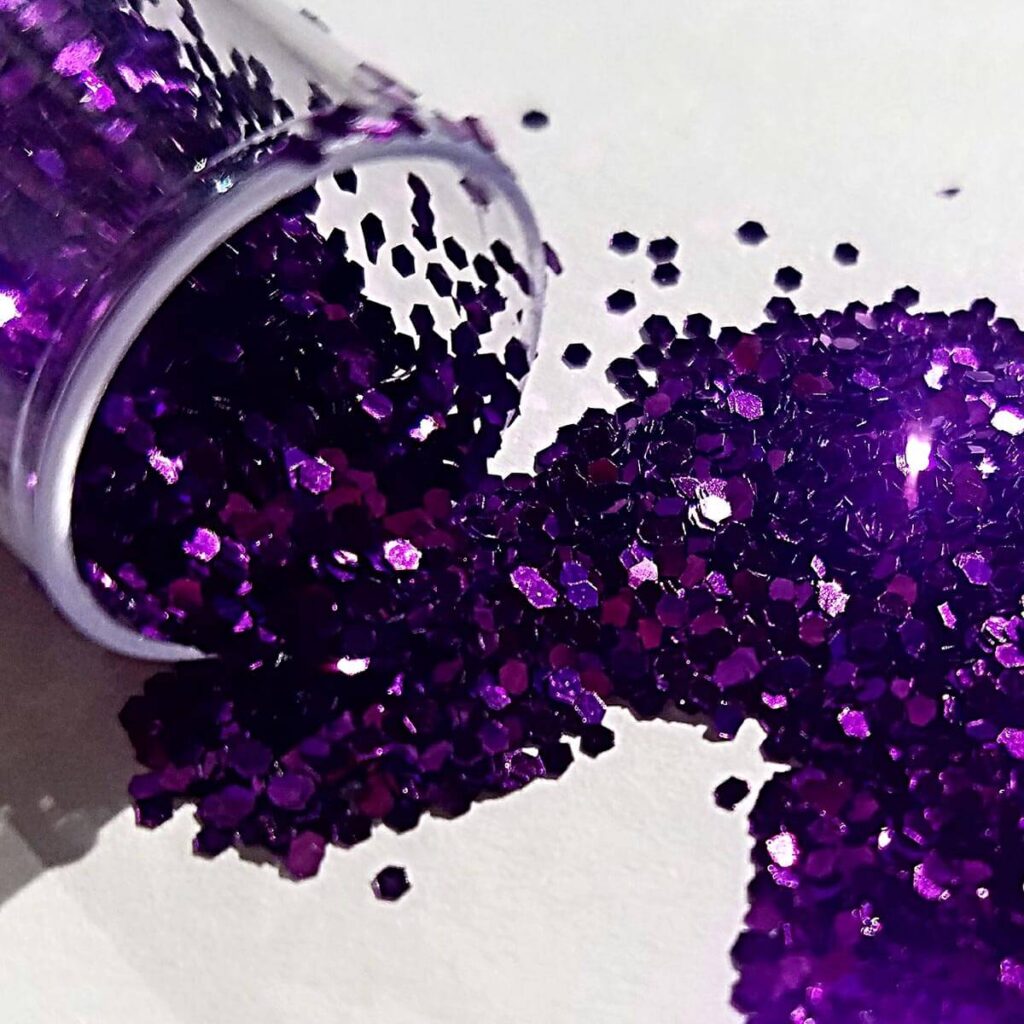
BIO-GLITTER
In every product we offer, we include bio glitter made from plant cellulose film- a natural and biodegradable material. When the glitter is eventually disposed of, it breaks down more easily and reduces the risk of microplastic pollution compared to traditional plastic-based glitter. However, it is essential for us to be responsible for the way we dispose of it because even though bio glitter is more environmentally friendly, it’s still important to use it responsibly. Glitter, whether traditional or bio, should not be directly released into the environment, such as in bodies of water or natural habitats. Proper disposal methods, such as placing it in the trash or recycling it according to local guidelines, should be followed to minimize any potential environmental impact.

BIO-GLITTER
In every product we offer, we include bio glitter made from plant cellulose film- a natural and biodegradable material. When the glitter is eventually disposed of, it breaks down more easily and reduces the risk of microplastic pollution compared to traditional plastic-based glitter. However, it is essential for us to be responsible for the way we dispose of it because even though bio glitter is more environmentally friendly, it’s still important to use it responsibly. Glitter, whether traditional or bio, should not be directly released into the environment, such as in bodies of water or natural habitats. Proper disposal methods, such as placing it in the trash or recycling it according to local guidelines, should be followed to minimize any potential environmental impact.
RECYCLED CARDBOARD
For our packaging and cards, we used recycled cardboard. By utilizing recycled materials, we reduce the need for virgin resources and minimize deforestation. The production of recycled cardboard requires less energy and emits fewer greenhouse gases, lowering its carbon footprint. Choosing recycled cardboard for packaging also diverts waste from landfills and promotes a circular economy. It encourages recycling practices, helps reduce landfill methane emissions, and supports sustainable waste management. Overall, packaging with recycled cardboard is an eco-friendly choice that conserves resources, reduces emissions, and contributes to a more sustainable future.


RECYCLED CARDBOARD
For our packaging and cards, we used recycled cardboard. By utilizing recycled materials, we reduce the need for virgin resources and minimize deforestation. The production of recycled cardboard requires less energy and emits fewer greenhouse gases, lowering its carbon footprint. Choosing recycled cardboard for packaging also diverts waste from landfills and promotes a circular economy. It encourages recycling practices, helps reduce landfill methane emissions, and supports sustainable waste management. Overall, packaging with recycled cardboard is an eco-friendly choice that conserves resources, reduces emissions, and contributes to a more sustainable future.

SEAL STICKER
For our packaging, we prioritize the use of eco-friendly seal stickers instead of the typical ones due to their alignment with our commitment to sustainability and reducing our environmental footprint. By opting for stickers made from recycled materials or compostable substances, we minimize plastic waste and contribute to a healthier planet while maintaining the quality and integrity of our packaging.

SEAL STICKER
For our packaging, we prioritize the use of eco-friendly seal stickers instead of the typical ones due to their alignment with our commitment to sustainability and reducing our environmental footprint. By opting for stickers made from recycled materials or compostable substances, we minimize plastic waste and contribute to a healthier planet while maintaining the quality and integrity of our packaging.
INK
For our packaging, dust bags, and cards, we utilized eco-friendly ink, prioritizing its positive impact on the environment. This helps reduce the release of harmful chemicals and pollutants into the ecosystem, minimizing our ecological footprint. This sustainable alternative is derived from renewable resources and has lower volatile organic compound (VOC) emissions compared to conventional inks. It ensures a safer and healthier environment for both people and the planet.


INK
For our packaging, dust bags, and cards, we utilized eco-friendly ink, prioritizing its positive impact on the environment. This helps reduce the release of harmful chemicals and pollutants into the ecosystem, minimizing our ecological footprint. This sustainable alternative is derived from renewable resources and has lower volatile organic compound (VOC) emissions compared to conventional inks. It ensures a safer and healthier environment for both people and the planet.
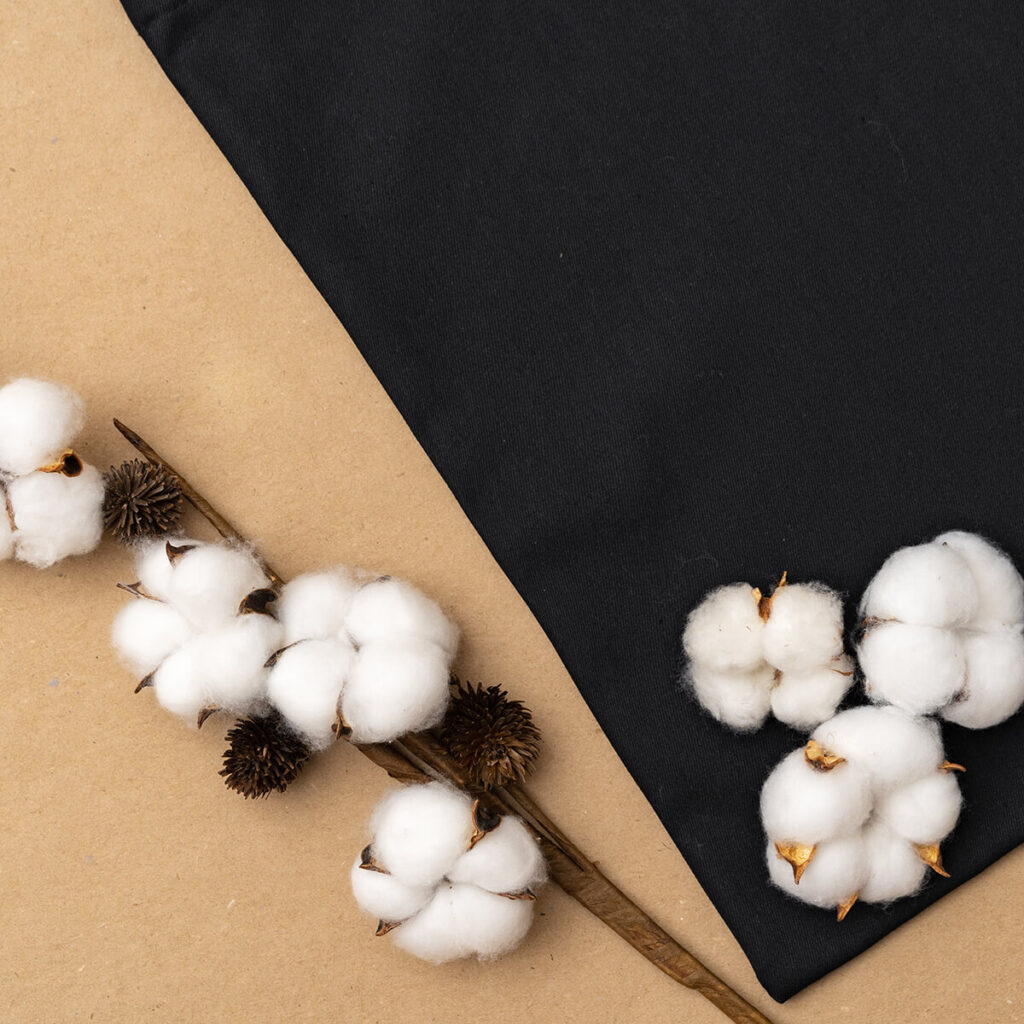
ORGANIC COTTON
The dust bags we have chosen are made of organic cotton, which carries significant environmental benefits. Organic cotton is grown without the use of synthetic pesticides or genetically modified organisms (GMOs). This cultivation approach helps to preserve soil quality, biodiversity, and water resources. By avoiding harmful chemicals, organic cotton production safeguards the health of farmers, workers, and surrounding ecosystems. Additionally, organic cotton typically requires less water compared to conventional cotton farming, contributing to water conservation efforts. By opting for dust bags made of organic cotton, we prioritize sustainability and support a more responsible and eco-friendly textile industry.

ORGANIC COTTON
The dust bags we have chosen are made of organic cotton, which carries significant environmental benefits. Organic cotton is grown without the use of synthetic pesticides or genetically modified organisms (GMOs). This cultivation approach helps to preserve soil quality, biodiversity, and water resources. By avoiding harmful chemicals, organic cotton production safeguards the health of farmers, workers, and surrounding ecosystems. Additionally, organic cotton typically requires less water compared to conventional cotton farming, contributing to water conservation efforts. By opting for dust bags made of organic cotton, we prioritize sustainability and support a more responsible and eco-friendly textile industry.
WRAPPING PAPER
We have chosen to use recycled wrapping paper instead of the typical ones for our packaging. This decision has a significant positive impact on the environment. By utilizing recycled wrapping paper, we help reduce the demand for virgin materials, conserving natural resources and reducing energy consumption. Additionally, it minimizes waste going to landfills, contributing to a circular economy and mitigating the environmental impact of traditional wrapping paper production.


WRAPPING PAPER
We have chosen to use recycled wrapping paper instead of the typical ones for our packaging. This decision has a significant positive impact on the environment. By utilizing recycled wrapping paper, we help reduce the demand for virgin materials, conserving natural resources and reducing energy consumption. Additionally, it minimizes waste going to landfills, contributing to a circular economy and mitigating the environmental impact of traditional wrapping paper production.


